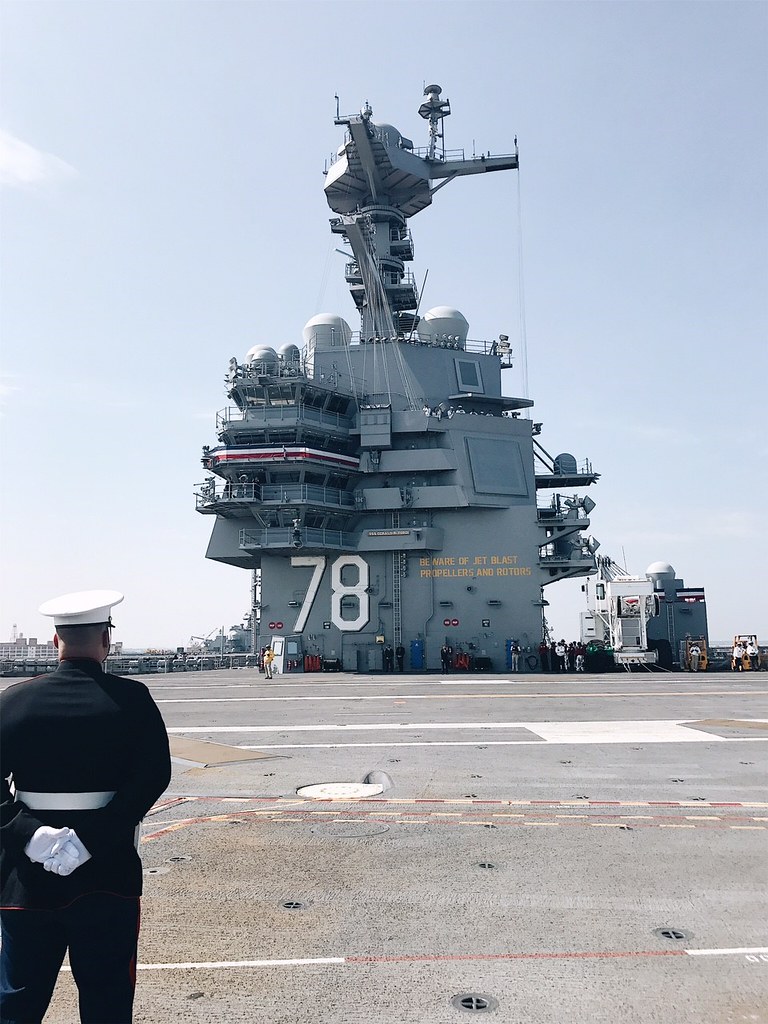
The USS Gerald R. Ford (CVN 78) has solidified its position as the most technologically sophisticated aircraft carrier in the world, introducing unmatched capabilities and setting the stage for America’s naval future.

Commissioned in 2017, the Ford represents a quantum leap over its predecessors, the Nimitz-class carriers, which have been the backbone of the U.S. Navy’s power projection for nearly half a century.

The Gerald R. Ford completed its first global deployment earlier this year, a significant milestone that demonstrated its readiness and effectiveness.

The cornerstone of the Ford’s advancement lies in the Electromagnetic Aircraft Launch System (EMALS), a revolutionary technology that replaces the traditional steam catapults used on previous carriers.

EMALS provides smoother, faster, and more energy-efficient launches of a wide range of aircraft, from the lightest drones to the heaviest fighter jets. Moreover, the system is expected to accommodate future air wing platforms, enhancing the carrier’s longevity and adaptability.

The Ford’s prowess is further amplified by its two A1B nuclear reactors, which offer a 25% increase in power over the Nimitz-class reactors.

This power surplus is essential not only for current systems but also for future directed-energy weapons (DEWs) and other advanced defensive technologies that may come online during the Ford’s service life.

The Advanced Arresting Gear (AAG) complements the EMALS by facilitating safer and more efficient recovery of a broader range of aircraft.

The AAG system, which has been designed with built-in test and diagnostic capabilities, also boasts lower energy consumption and a decreased weight, contributing to the ship’s overall efficiency.

To bolster the carrier’s operational tempo, the Ford-class carriers are equipped with Advanced Weapons Elevators (AWE), utilizing electromagnetic and hydraulic systems to move ordnance with unprecedented speed and safety.

These innovations result in fewer personnel required for munition handling, aligning with the Ford’s design philosophy of leveraging technology to reduce crew size.

The Ford-class carriers demonstrate formidable combat capabilities, hosting a variety of powerful airframes including the stealthy F-35 Lightning II, F/A-18E/F Super Hornet, and the EA-18G Growler electronic attack aircraft, among others.

These carriers are also prepared for the integration of unmanned air and combat vehicles, aligning with the evolving landscape of aerial warfare.

Quality of life enhancements are not forgotten aboard the Ford, with the ship’s design allowing for improved living quarters, gyms, and workspaces—benefiting the 4,539-strong crew of sailors, airmen, and staff. The crew is smaller than that of the Nimitz-class by nearly 700, a testament to the ship’s efficient design.

Future ships of the class, such as the PCU John F. Kennedy (CVN 79) and others, are set to carry the Ford’s legacy forward, offering the U.S. Navy unmatched capability in terms of power projection, deterrence, maritime security, and humanitarian aid. Each ship is designed for a service life of 50 years, with built-in allowances for technological upgrades.
Relevant articles:
– U.S. Navy’s Ford-Class Aircraft Carriers: The Best Ever to Sail, The National Interest
– USS Gerald R. Ford: The U.S. Navy’s Biggest and Best Aircraft Carrier, The National Interest
– USS Gerald R. Ford: The U.S. Navy’s Biggest and Best Aircraft Carrier, The National Interest
– Gerald R. Ford Class Aircraft Carrier, Military.com

